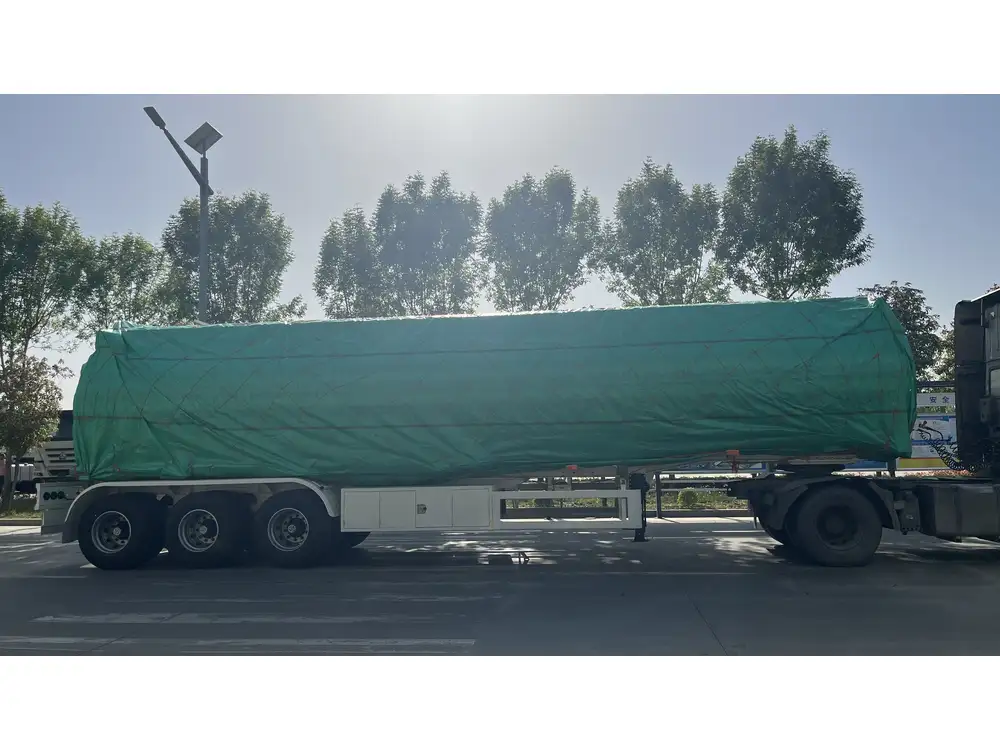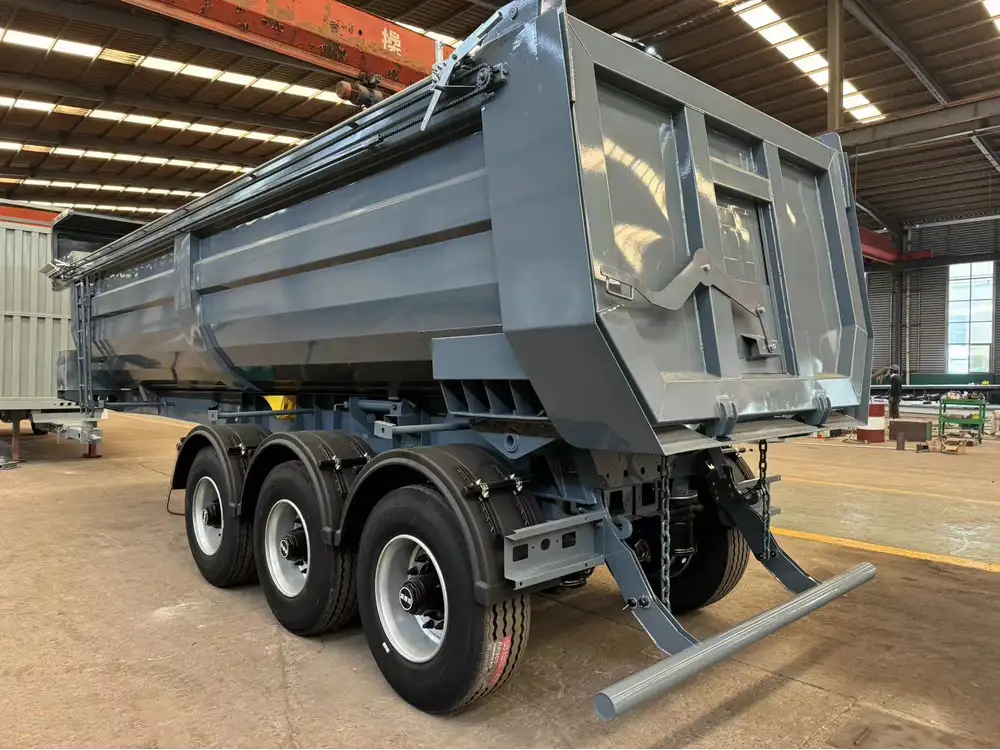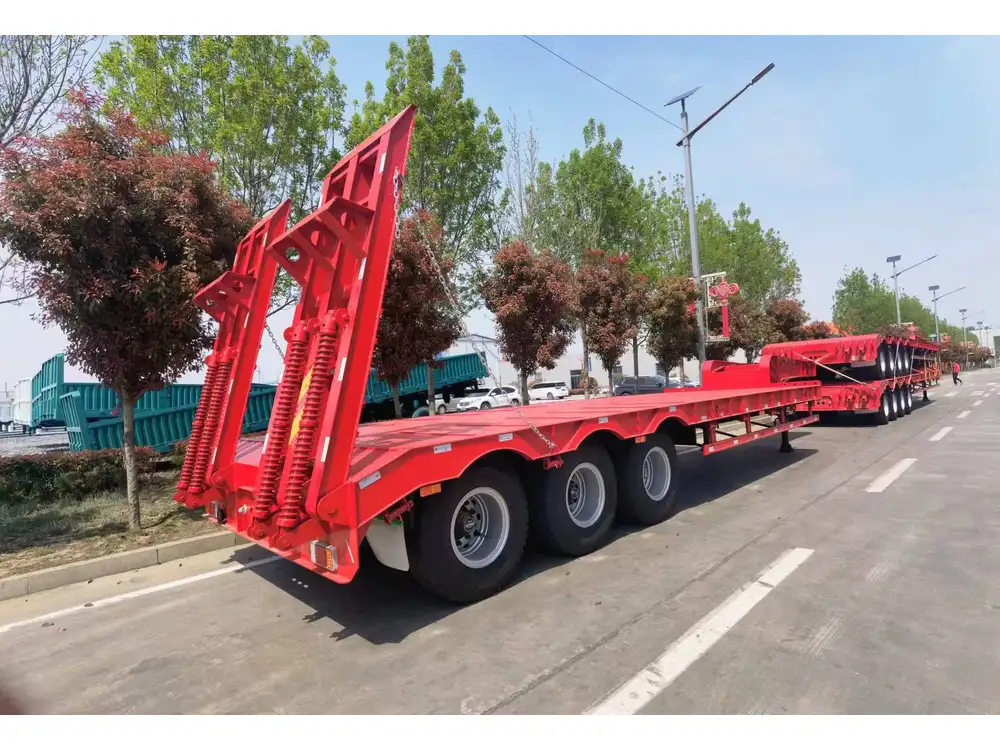Dump trailers have become indispensable in various industries, from construction to landscaping. As a manufacturer of semi-trailers, we understand the nuances of design choices that enhance their functionality. One noticeable feature across many dump trailers is the presence of square holes in the metal frame. This article aims to dissect the reasons behind this design element comprehensively, examining its functionality, benefits, and implications for end-users.
1. Structural Integrity: Why Square Holes Matter
1.1 Enhanced Load Distribution
One fundamental reason for incorporating square holes in the metal structure of dump trailers lies in load distribution. These holes serve as reinforcement points that contribute to the overall structural integrity of the trailer. By allowing for uniform distribution of stress, manufacturers can ensure that trailers withstand the significant forces encountered during use, especially when offloading heavy materials.

Table 1: Load Distribution Comparison
| Load Type | Traditional Design | Square Hole Design |
|---|---|---|
| Uniform Loads | Low Stability | High Stability |
| Non-Uniform Loads | Moderate Stability | Excellent Stability |
1.2 Weight Reduction without Compromising Strength
Another critical function of square holes is to reduce the overall weight of the trailer while maintaining its strength. Traditional designs may rely on solid metal frames, which can add unnecessary weight. By cutting square holes strategically, the design can achieve an optimal balance, reducing material costs and enhancing fuel efficiency during transport.
2. Versatility of Square Holes in Different Applications

2.1 Customization Options
Square holes facilitate various customization options in dump trailers. Manufacturers can use these apertures to offer a range of attachments, such as tarpaulin systems, side extensions, or specialized hitches for specific loads.
List of Common Attachments:
- Tarpaulin Systems: Protect loads from the elements.
- Side Extensions: Increase loading capacity for bulk materials.
- Hitch Adaptations: Tailor to specific towing requirements.
2.2 Improved Drainage Characteristics
When transporting wet materials, drainage becomes essential. Square holes can be designed to promote better drainage during unloading, enabling payloads like sand or gravel to flow more freely. This feature minimizes the chances of material clumping and ensures efficiency in the unloading process.

Table 2: Drainage Effectiveness
| Material Type | Traditional Design (No Holes) | Square Hole Design |
|---|---|---|
| Wet Sand | Poor Drainage | Excellent Drainage |
| Dry Gravel | Minimal Drainage | Good Drainage |
| Soil (Bulk) | Moderate Drainage | High Drainage |
3. Design Flexibility: A Competitive Advantage
3.1 Manufacturing Simplicity
The use of square holes simplifies the manufacturing process. Instead of complex shapes that may require specialized machinery, the square design can be cut more easily using standard tools. This efficiency can lead to shorter production times and lower costs, providing competitive pricing options for the market.

3.2 Facilitating Repairs and Modifications
In the event of damage, square holes make repairs more straightforward. They provide access points that allow for easy inspection and replacement of damaged sections without needing to dismantle large components of the trailer, ensuring minimal downtime.
4. Maintenance and Safety Considerations
4.1 Facilitating Inspections
Square holes can serve as visual inspection points. They allow operators and maintenance personnel to easily check for potential structural issues, rust, or fatigue. This proactive approach to maintenance contributes significantly to the lifespan of the trailer while ensuring user safety.

4.2 Reducing Load-related Accidents
With proper load application and securement strategies facilitated by square holes, dump trailers contribute to reduced accidents during transport and unloading. An understanding of how to use these designed features can empower operators, promoting safer work practices.
5. The Aesthetic Factor: Appearance Matters Too
5.1 Visual Appeal
While functionality is critical, aesthetic considerations also play a role in design decisions. Square holes in metal can lend a rugged, industrial look to dump trailers, appealing to customers seeking both form and function. An attractive design can differentiate a brand in a competitive marketplace, potentially influencing purchasing decisions.

5.2 Brand Customization
Manufacturers can also use square holes for branding opportunities. By offering customizable shapes or sizes, brands can market their trailers in a way that appeals to specific customer segments, reinforcing brand identity through distinctive designs.
6. Environmental Considerations: A Step Towards Sustainability
6.1 Material Efficiency
The design feature of square holes enables manufacturers to use fewer raw materials without sacrificing durability. This efficient use of resources ultimately leads to less waste, aligning with sustainability goals increasingly shared across industries.

6.2 Energy Efficiency During Manufacturing
Less material usage also translates to reduced energy consumption during manufacturing. Both factors ensure that dump trailers contribute less to environmental degradation, making them a preferable choice for eco-conscious businesses.
Conclusion: Embracing the Square Hole Phenomenon in Dump Trailers
The inclusion of square holes in dump trailers represents a convergence of engineering ingenuity and functional necessity. From structural integrity and weight reduction to customization options and environmental considerations, these seemingly simple design features encapsulate a multitude of benefits that contribute to their popularity and effectiveness in the industry.
Understanding these aspects allows potential buyers to make informed decisions. As a manufacturer of semi-trailers, we pride ourselves on innovative designs that not only meet but exceed the expectations of our clients.
In summary, square holes in dump trailers are far from being mere aesthetic choices or arbitrary design elements. They serve practical purposes, elevate usability, and contribute to overall functionality. As we continue to evolve our designs, embracing such features ensures that we provide solutions that truly serve the diverse needs of our customers.



